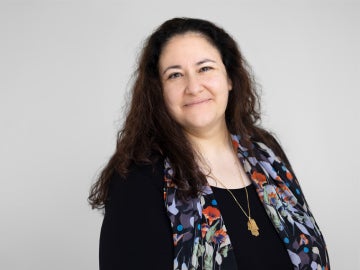Senior Symposium 2016 Preview, Part 3
April 29, 2016
Lisa Gulasy
The Office of the Dean of Arts and Sciences and the Office of the Dean of Studies invite all members of the campus and community to celebrate the academic and artistic endeavors of members of the Class of 2016 at the seventh annual Senior Symposium on Friday, April 29, 2016.
The symposium begins at 1 p.m. in King 306 with opening remarks from Tim Elgren, dean of the College of Arts and Sciences. Concurrent panels begin at 1:30, 2:45, and 4 p.m. in various rooms on the third floor of King, and a reception in the Rice/King Courtyard will begin at 5:15 p.m.
This year, more than 50 seniors and fifth-years on 17 panels will each give a 12-minute presentation regarding work they performed for honors or capstones or research they conducted individually or with a faculty mentor.
To get a sense of the rich variety of topics covered at this year’s symposium, the Source is sharing a handful of project abstracts written by presenting seniors in the days leading up to the event. Learn more about the students included in today’s batch by clicking individual photos in the gallery above.
Elena Robakiewicz, “Pliocene Diatom Abundance as Proxy for Temperature In Weddell Sea: ODP Site 697”
During the Pliocene, carbon dioxide in the atmosphere was approximately 400 ppm. Today’s atmosphere exhibits similar carbon dioxide levels. Analyzing diatom abundance and changes in species diversity in the Weddell Sea during the Pliocene provides insight into temperature and sea-ice cover changes during this important time interval. Diatom abundance and diversity at ODP Site 697 displays distinct species oscillations between 3.26 to 3.03 million years ago. Colder periods include 3.23 mya, 3.08 mya, and begin again around 3.03 mya.
Gabriel Brown, “Contested Land, Contested Representations: Re-visiting the Arab Revolt of 1036-1939 in Palestine”
This project examines contested representations of the Arab Revolt of 1936-1939 in Palestine and the interests of the groups that constructed these representations. Brown uses archival documents, historical newspapers, and memoirs to demonstrate that Palestinians tended to portray the conflict as a defining moment of national unity, while British and Zionist leaders understood it as a series of violent, criminal disturbances. His thesis explores Palestinian motivations and tactics in order to challenge characterizations of rebels as “extremists.” Brown argues that the revolt’s failure allowed British and Zionist representations to emerge as the hegemonic discourse reaching English-speaking audiences about the rebellion.
Allison Fulton, “To Come Alive in Our Experience: The Sounds of Listening in Sigurd F. Olson”
Fulton’s research explores the reflective qualities of nature that can lead to different ways of being in and of the world. In The Singing Wilderness, Sigurd Olson details his experiences in the Quetico-Superior region, an international wilderness of lakes and forests on the border of Canada and Minnesota that is replete with spaces for reflection. Olson encourages his readers to listen to the sounds, songs, and silences of the wilderness. Fulton addresses his creation of the literary terrain he made accessible to his readers by acting as a guide to the imaginative wilderness with a literary canoe and paddle.
Manon Hume, “Twelve Syllables and Counting: Translating Racine’s Andromaque (1667) in Alexandrines”
Jean-Baptiste Racine is easily one of the most influential dramatists in French history. Yet centuries after his plays first hit the stage, he is still considered “untranslatable” by Anglophone audiences. This project not only delves into the unique aspects of Racinian verse, but undertakes a never-before-attempted technique to translating them: maintaining the original classical French alexandrine format. Through the analysis and comparison of my “French alexandrine in English” with other English translations, Hume examines the benefits of this new approach and its attempt to capture “la musique racinienne.”
Tomoyo Joshi, “Managing Racist Pasts: The Black Justice League’s Demand for Inclusion and Its Challenge to the Promise of Diversity”
Joshi will present the results of her honors thesis, in which she examines online diversity initiative pages, student activism, and administrative responses that took place in fall 2015 at Princeton University. In the first section, she analyzes Princeton’s online diversity initiative page, “Many Voices, One Future,” by demonstrating how “diversity” becomes individualized, commodified, and quantified. In the second section, she investigates how the actions of and responses to the Black Justice League challenge the rhetoric of diversity that the administration embodies. Ultimately, she questions the implications of demanding “inclusion” into the academy almost half a century after the struggle for ethnic studies.
Nathan Klein, “On the Approximability of DAG Edge Deletion”
The DAG Edge Deletion problem of k, or DED(k), is to delete the minimum weight set of edges from a directed graph such that the remaining graph has no path of length k. It can be used to find the best schedule for completing tasks with soft precedence constraints within k time-steps. In 2015 Kenkre et al. showed that DED(k) has no polynomial- time approximation algorithm with ratio better than k/2 unless the Unique Games Conjecture is false. However, the best known approximation algorithm has a ratio of k. In this work, Klein tightens this gap by giving a (2/3)k +O(1) approximation for DED(k).
You may also like…
Remembering Former Visiting Assistant Professor Leila Ben-Nasr
Leila Ben-Nasr, a former visiting assistant professor of comparative American studies, died on November 28, 2025.
Oberlin Community Remembers a Beloved Retired Professor
A member of Oberlin faculty for 13 years, Peggy Bennett was known by students and the Oberlin community for creating and leading MusicPlay, a preschool classroom and learning lab run as part of the...
Eric Rooks Named Director of Campus Safety at Oberlin
Longtime public servant emphasizes collaborative partnerships and kindness.


